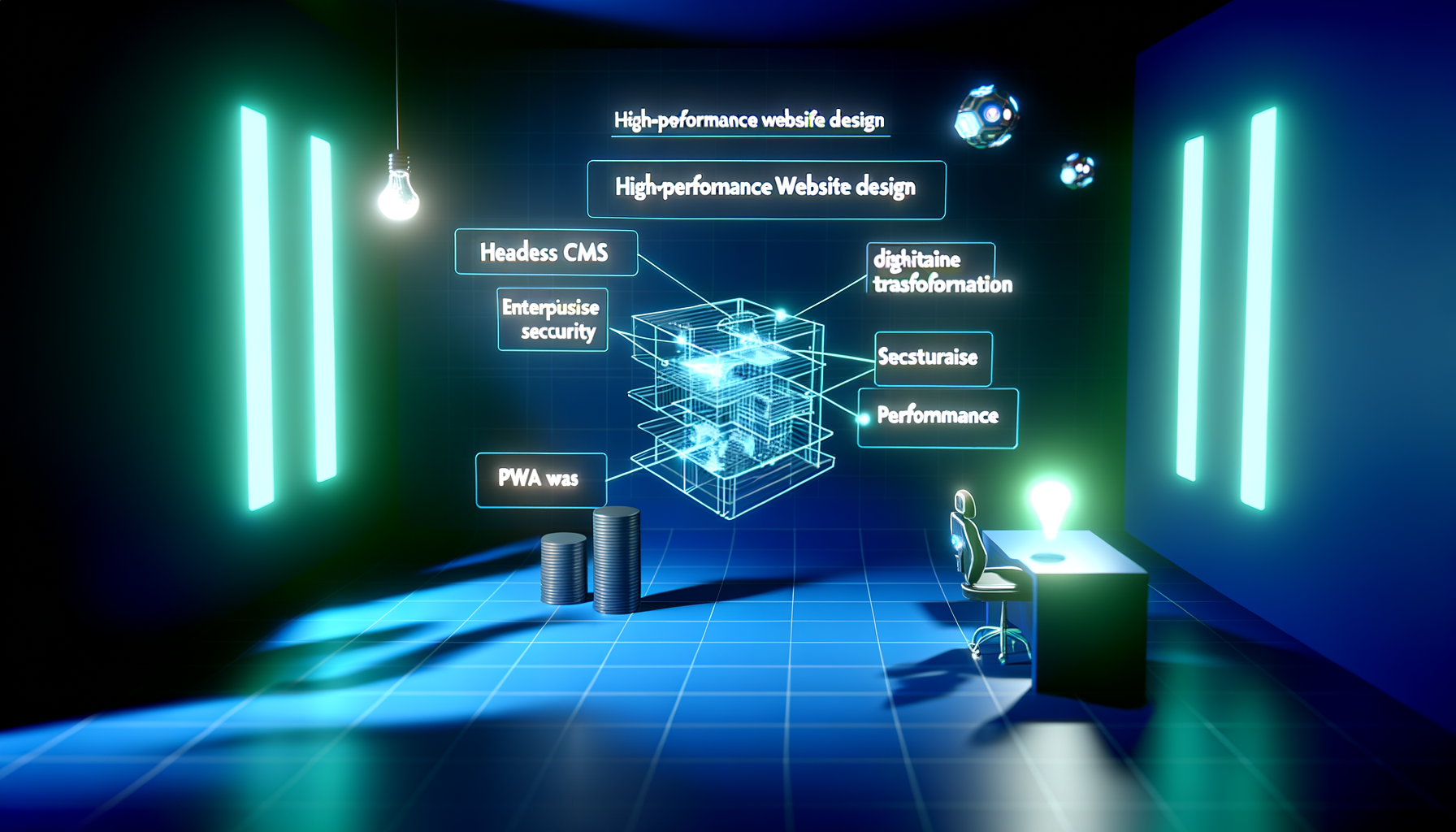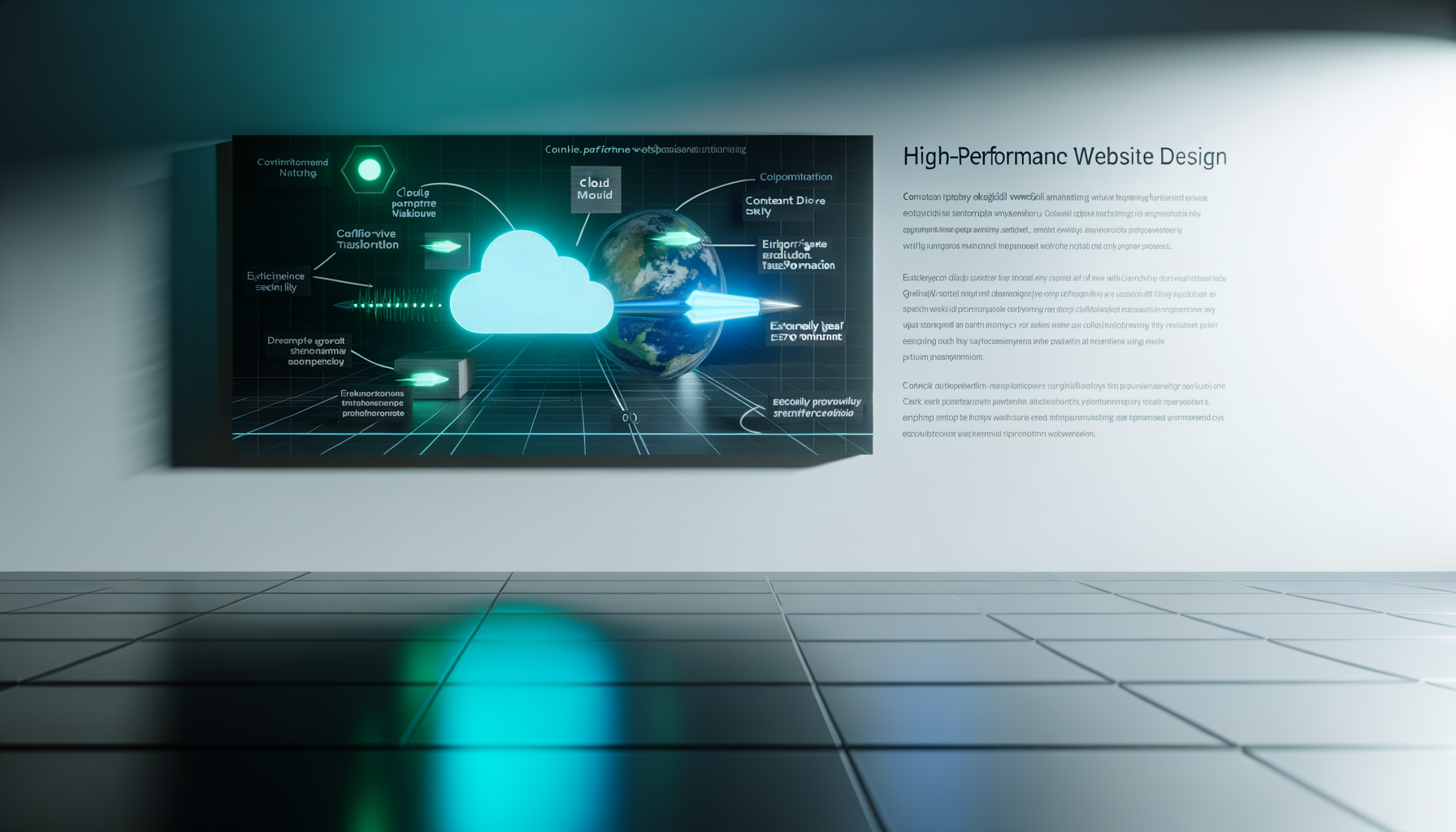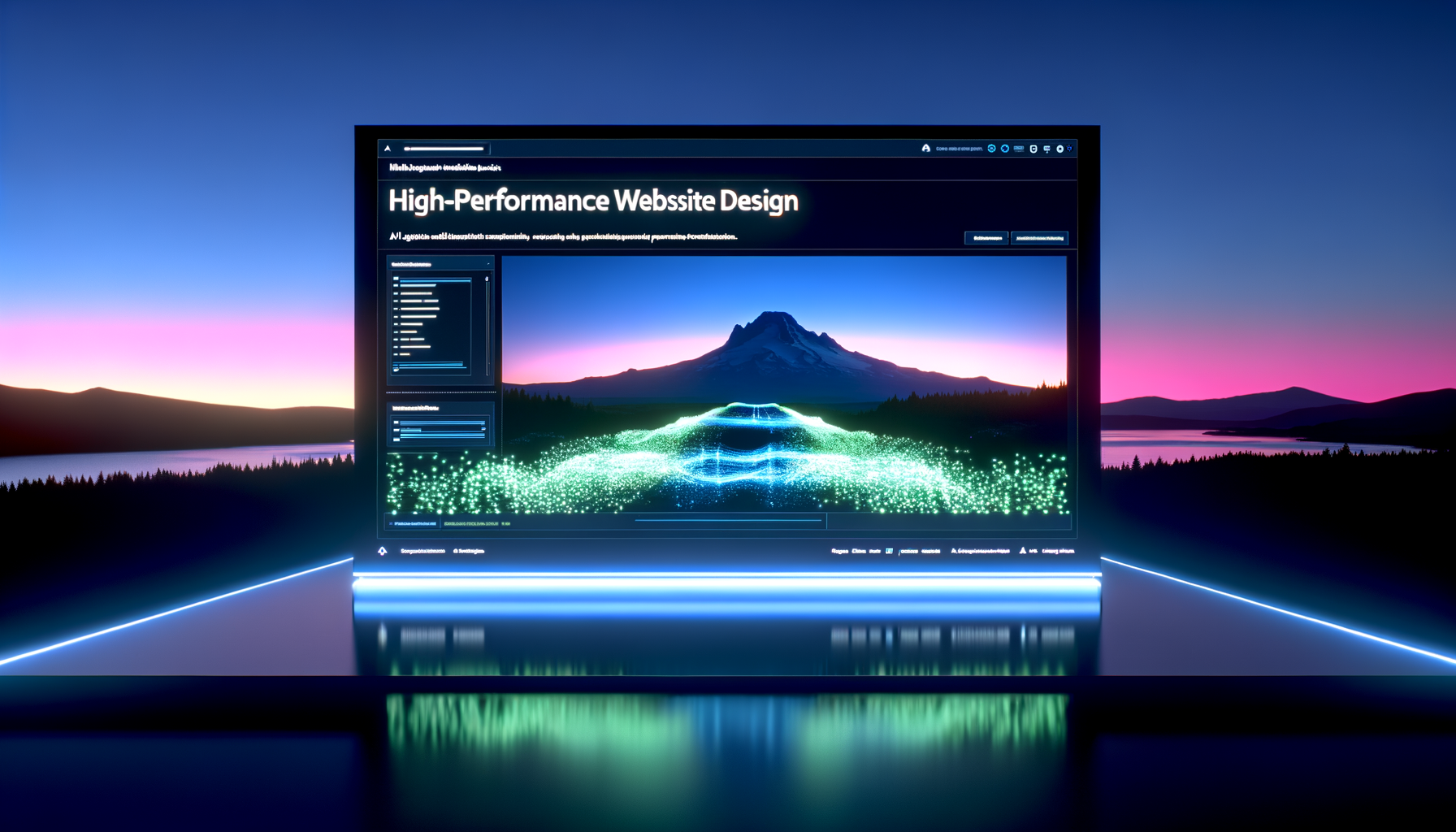Imagine a world where your website loads in the blink of an eye, transforming user engagement and driving revenue. In 2023, 70% of users expect sub-second load times, underscoring the necessity for high-performance website design. This post will explore the essential elements that define modern web design and how Quicklook can help your business stay ahead of the curve.
The Evolution of Modern Website Design

A diagram of modern web architecture featuring headless CMS and PWA integration.
The shift towards high-performance site design is driven by increasing user expectations and Google's emphasis on speed as a ranking factor. Modern websites are characterized by their responsiveness, speed, and adaptive abilities.
Adopting a headless CMS allows for a seamless separation of front-end presentation and back-end content management, enabling more flexible and scalable solutions.
Progressive Web Apps (PWAs) are part of this evolution, combining the best of web and mobile apps to deliver an app-like experience without the need for downloads.
LIST
- •Adopt headless CMS
- •Leverage Progressive Web Apps
- •Focus on speed and scalability
Harnessing AI for Unmatched Performance

An AI algorithm optimizing website content for various user profiles.
AI integration into web design is no longer optional—it's a necessity. AI optimizes everything from personalized user experiences to predictive analytics that guide design improvements.
Quicklook's AI-driven solutions can automate content personalization, ensuring users receive relevant information quickly and efficiently.
Machine learning algorithms can also enhance website search functionalities, making it easier for users to find exactly what they need.
CALLOUT
AI personalization boosts user engagement by 30%.
The Role of Responsive Design

Developers collaborating on responsive web design mockups.
Responsive design is crucial in a mobile-first world. It ensures your website functions seamlessly across all devices, from desktops to smartphones.
By utilizing flexible grid layouts, images, and CSS media queries, responsive design adapts to the user's screen size and orientation.
Quicklook's design strategies ensure that your website is both aesthetically pleasing and functional across all platforms.
QUOTE
"Responsive design is not just a trend; it's a fundamental approach to web development." - Industry Expert
Achieving Sub-Second Load Times

Cloud-migration diagram showing content delivery network setup.
Speed is the name of the game in modern web design. Research indicates that a one-second delay can result in a 7% reduction in conversions.
Techniques such as image optimization, content delivery networks (CDNs), and efficient caching strategies are critical for achieving sub-second load times.
Quicklook leverages cutting-edge technologies to ensure your website not only meets but exceeds speed expectations.
LIST
- •Optimize images and assets
- •Implement CDNs
- •Use efficient caching strategies
Security and Scalability in Web Design

A secure server room with advanced web architecture.
High-performance websites must also be secure and scalable. Ensuring robust security protocols protects against data breaches and builds user trust.
Scalable infrastructures, such as cloud-based solutions, ensure that your website can handle traffic spikes seamlessly.
Quicklook's expertise in enterprise security ensures your website is fortified against emerging threats while remaining scalable.
CALLOUT
Scalable design ensures 99.9% uptime.
Frequently Asked Questions
QWhat are the key elements of high-performance website design in 2025?
QHow does AI integration enhance modern website performance?
QWhat role does responsive design play in high-performance websites?
Conclusion
High-performance website design combines speed, AI, and responsive capabilities to meet modern user expectations.
Future Vision
Embracing these strategies now will future-proof your digital presence.
Schedule your AI audit with Quicklook.
